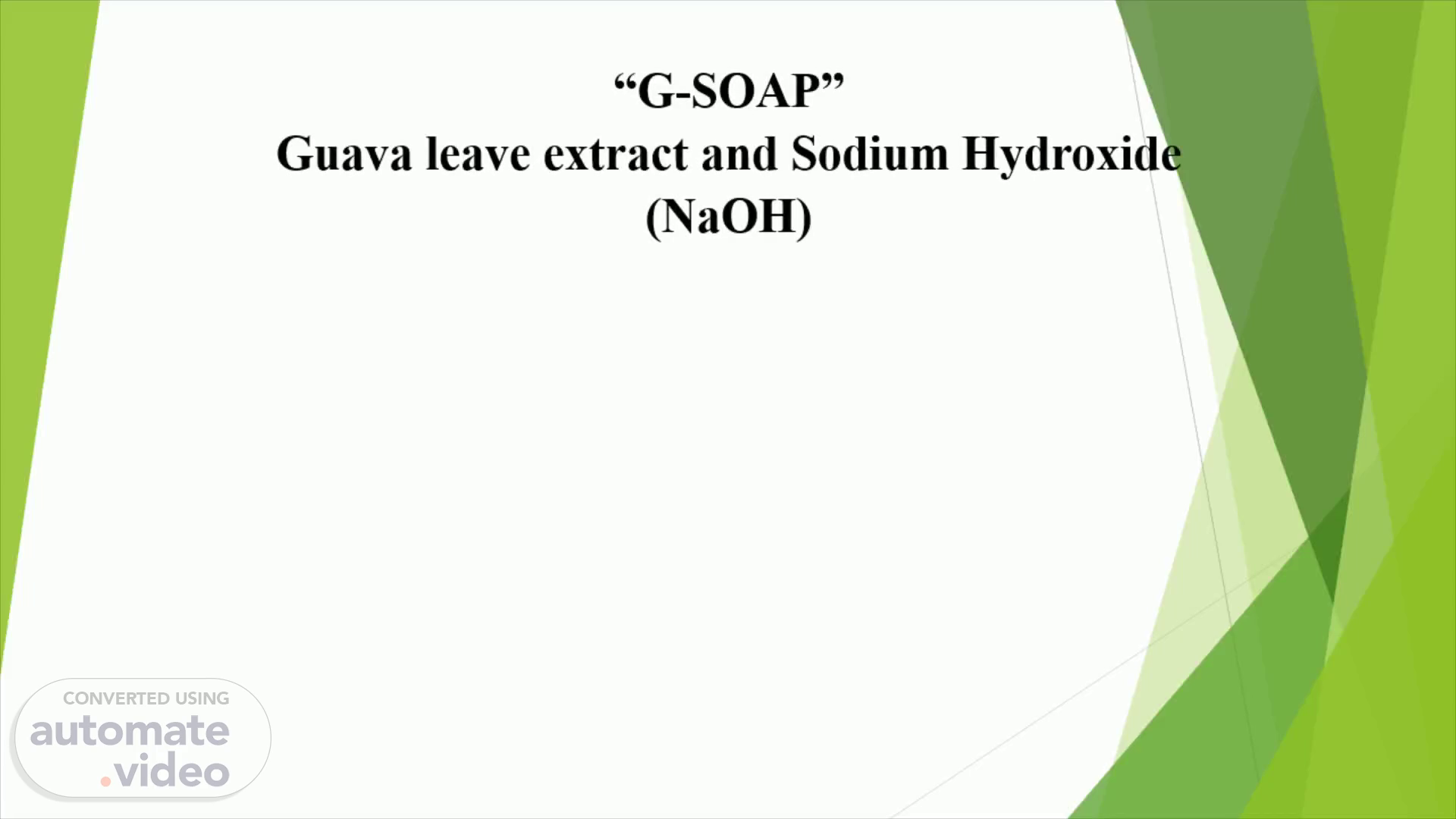
Page 1 (0s)
[Audio] " G-SOAP" Guava leave extract and Sodium Hydroxide.
Page 2 (13s)
[Audio] Introduction We use our hands to write reports, open doors, and hold money on a daily basis. All of these activities expose our hands to potentially harmful germs and bacteria. Bacteria were first linked with disease in the 1870s. Soon after, hand washing was considered necessary as a means to stay healthy. In the 1950s and 1960s, triclosan was first introduced in hospitals. Triclosan is the ingredient that kills bacteria in most antimicrobial soaps we as consumers use on a daily basis. Hand washing is extremely important to kill bacteria that can make us sick. Regular soap that does not contain antibacterial agents may work just as well as antimicrobial soap in killing these harmful bacteria. Also, antibacterial soap is likely only effective in removing harmful bacteria if it is left on the skin for two minutes. Most people do not wash their hands for two minutes every time, and therefore do not receive the benefits of antibacterial soap..
Page 3 (1m 27s)
[Audio] Statement of the Problem Main Problem Are homemade soaps more effective than the commercial soap? Sub-Problem Can homemade soaps can make our hands fresh and clean? What substances present in homemade soaps to kill germs? Does homemade soaps essential four our hands?.
Page 4 (1m 51s)
[Audio] RESEARCH STRATEGIES This research will use experimental method. This study will be useful for it: Will make a bio-soap made out of guava leaves that is capable of eliminating bacterias. Will provide an additional livelihood to support their everyday living. Will help the community to take care of their plants while saving money. Will provide an alternative product that is capable of doing what a commercial soap can do. Will reduce the use of chemical-based soap and promote an environment-friendly product..
Page 5 (2m 30s)
[Audio] The microbes ( bacteria, fungi, protozoa, Archaea) that live in and on the human body are abundant and diverse, with important implications for health. These microbes are thought to have co-evolved with humans in relation to the body sites they inhabit, providing an array of functions for the host, ranging from digestion to immune defense. While research endeavors such as the Human Microbiome Project aim to establish the normal range of variation in human microbiomes (encompassing all microbes, their genes, and functions) and effects on health, this task has been challenging due to the marked variation of microbial communities ( groups of microorganisms that coexist in a mutual space) within and across populations. With the exception of a few studies, microbiome research has focused on people living in Western settings, such as the United States and Europe, and is predominantly centered around the gut microbiome..
Page 6 (3m 30s)
[Audio] This study uses qualitative research design, employing a descriptive method. The process of observation is through a series of trials to determine the effectiveness of guava leaves in eliminating bacterias. Also, to distinguish and gather the data needed for the research. LOCALE OF THE STUDY This study focuses on making a bio-soap from the extracts of guava leaves. This study was conducted and utilized at Manuel S. Enverga Memorial School of Arts and Trades..
Page 7 (4m 7s)
[Audio] RESEARCH INSTRUMENTATION Questionnaires and survey forms were utilized as research instrument in this study. As a result, the researchers chose the questionnaire method. They distributed the research questionnaires through google forms, as it is the most appropriate way of gathering data due to Covid 19..